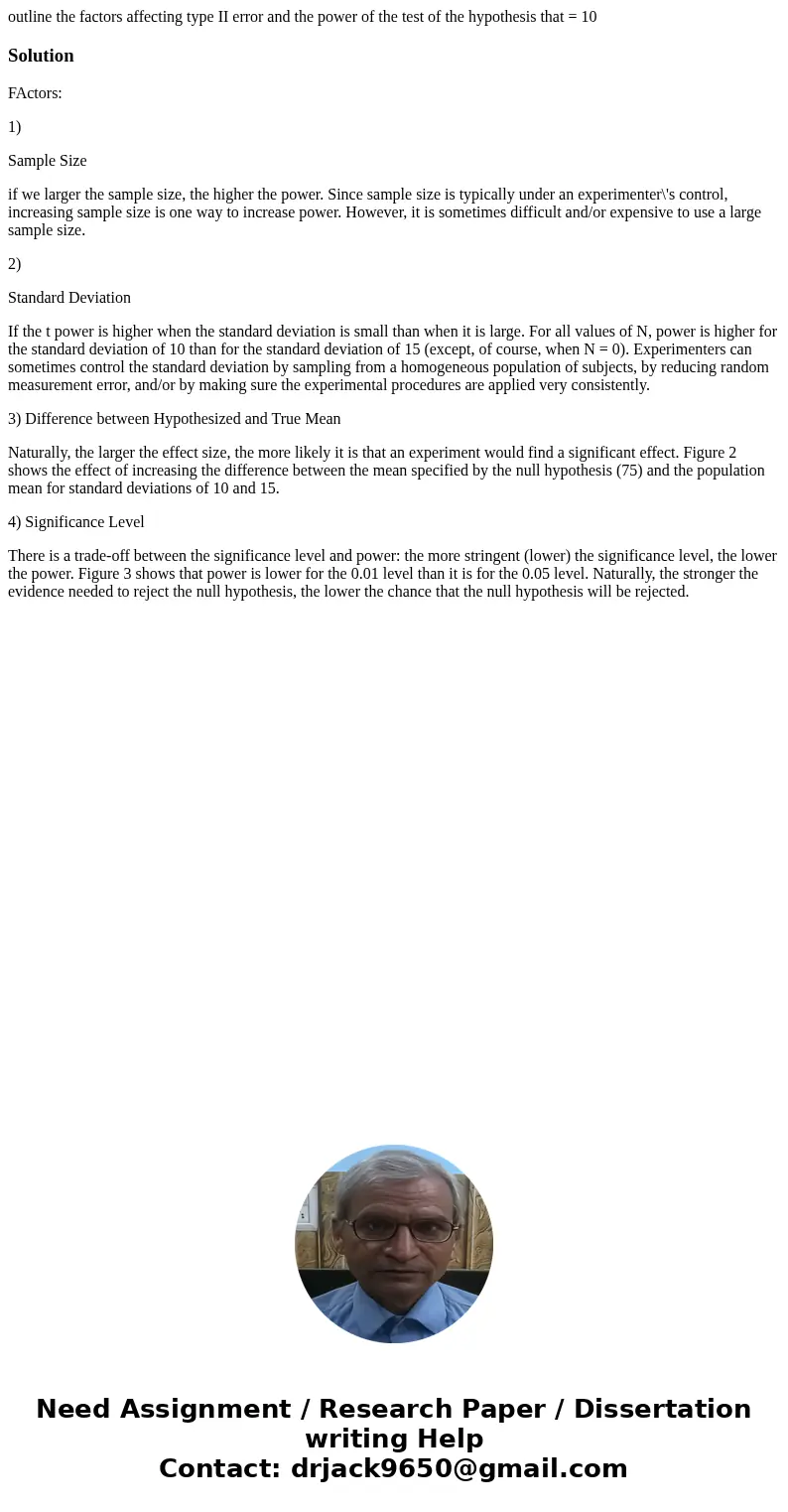outline the factors affecting type II error and the power of
outline the factors affecting type II error and the power of the test of the hypothesis that = 10
Solution
FActors:
1)
Sample Size
if we larger the sample size, the higher the power. Since sample size is typically under an experimenter\'s control, increasing sample size is one way to increase power. However, it is sometimes difficult and/or expensive to use a large sample size.
2)
Standard Deviation
If the t power is higher when the standard deviation is small than when it is large. For all values of N, power is higher for the standard deviation of 10 than for the standard deviation of 15 (except, of course, when N = 0). Experimenters can sometimes control the standard deviation by sampling from a homogeneous population of subjects, by reducing random measurement error, and/or by making sure the experimental procedures are applied very consistently.
3) Difference between Hypothesized and True Mean
Naturally, the larger the effect size, the more likely it is that an experiment would find a significant effect. Figure 2 shows the effect of increasing the difference between the mean specified by the null hypothesis (75) and the population mean for standard deviations of 10 and 15.
4) Significance Level
There is a trade-off between the significance level and power: the more stringent (lower) the significance level, the lower the power. Figure 3 shows that power is lower for the 0.01 level than it is for the 0.05 level. Naturally, the stronger the evidence needed to reject the null hypothesis, the lower the chance that the null hypothesis will be rejected.

 Homework Sourse
Homework Sourse